Greek Orthodox Food Calendar
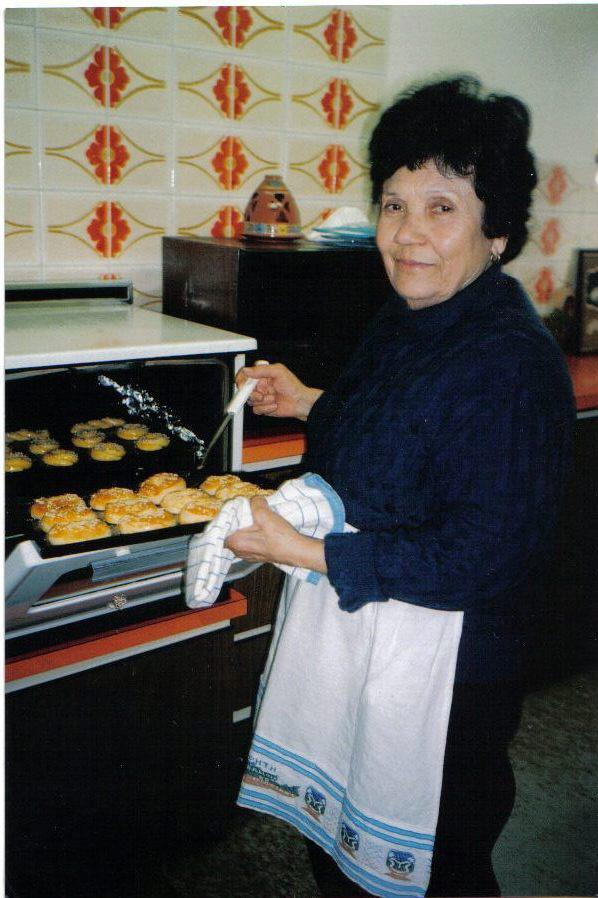
The Greek Orthodox Food Calendar is based on the historical traditions in the Byzantine Empire (AD 330-1453) and through Christian traditions from the Early Church established by Jesus and His Apostles.
A Greek Orthodox Christian devoutly follows the traditions of the Greek Orthodox Food Calendar which is a part of their heritage and their Christian way of life.
In every Greek Orthodox kitchen, housewives and daughters fire up their, stoves, grillers and ovens to prepare and serve the centuries-old dishes guided by their Greek Orthodox Food Calendar.
The Greek Orthodox Calendar provides opportunities to experience the services and celebrations throughout the year of the Mysteries of our Lord’s Birth, Life, Death and Resurrection.
Through feasts, memorials, commemorations and solemnities, we remember our dear Lord, Jesus Christ, our Blessed Virgin Mary, the Saints and the Prophets who have helped to shape Christian life.
The Greek Orthodox Church provides religious services, festivals and rituals to worship, observe, commemorate, celebrate and, to relive the great events of the Gospels and Christian history.
We go to church so that we may find Jesus the Savior, to hear the Voice of God through Liturgy and the Sacraments and to enjoy Christian fellowship.
Greek Orthodox Christian living is found in Holy Days and Name Days, in religious services and festivals, in births and baptisms and in church weddings and anniversaries.
The Greek Orthodox Food Calendar observes four long fasting periods of the year like Christmas, Easter, Feast Day of the Apostles (June 30) and the Assumption of the Blessed Virgin Mary (August 15) which regulate the Greek Orthodox diet.
The Christian faithful fast during these important religious events and then go to their church to receive Holy Communion.
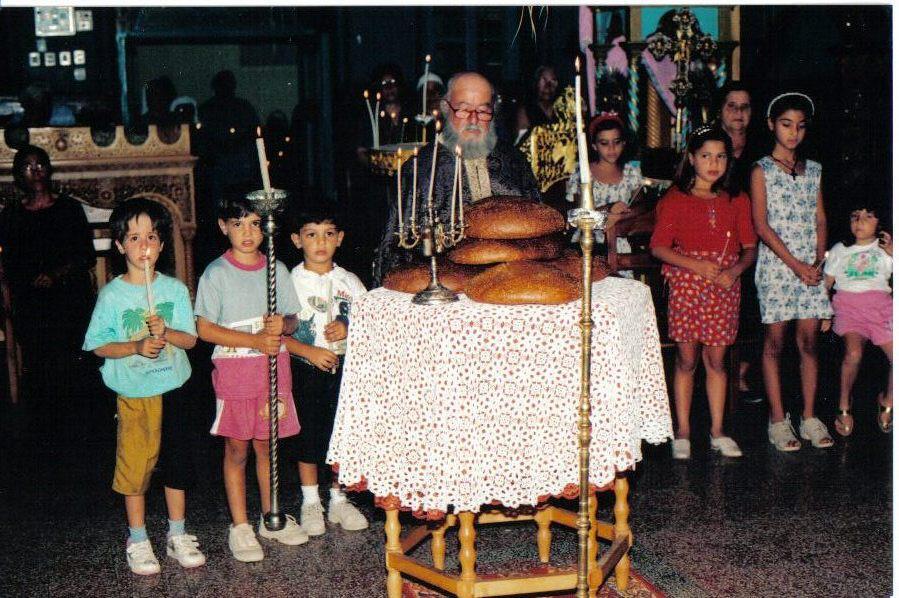
The Last Supper
The Last Supper took place just outside the walls of the Old City of Jerusalem and was the last meal Jesus shared with His Disciples before his Crucifixion.
Jesus told His Disciples, “I have eagerly desired to eat this Passover with you. "I will not eat it again until it finds fulfillment in the Kingdom of God”.
During the Last Supper, Jesus took a loaf of bread and gave thanks to God.
He broke it and gave it to His Disciples, saying, “’This is My Body given for you; do this in remembrance of Me.’
After the Supper He took a cup, saying, ‘This cup is the new Covenant in My blood, which is poured out for you’ (Luke 22:19-21).
After the Last Supper, they went to the Mount of Olives where Jesus was betrayed by Judas.
The following day (Good Friday) Jesus was Crucified.


Holy Communion
The Lord’s Supper (also known as Communion or the Eucharist) is found in the Gospels of Matthew, Mark, Luke and John.
Early Christians celebrated Communion instituted by Jesus and his Disciples at the Last Supper.
(Mark 14:22,23)
Holy Communion uses bread as a symbol for Jesus’ Body and wine as a symbol for His Blood.
It reminds us of our Lord and Savior's Death and Resurrection.
The Apostle Paul tells us that the Blood of Jesus brings forgiveness of sins (Colossians 1:14, Ephesians 1:7).
New Year's Day - January 1
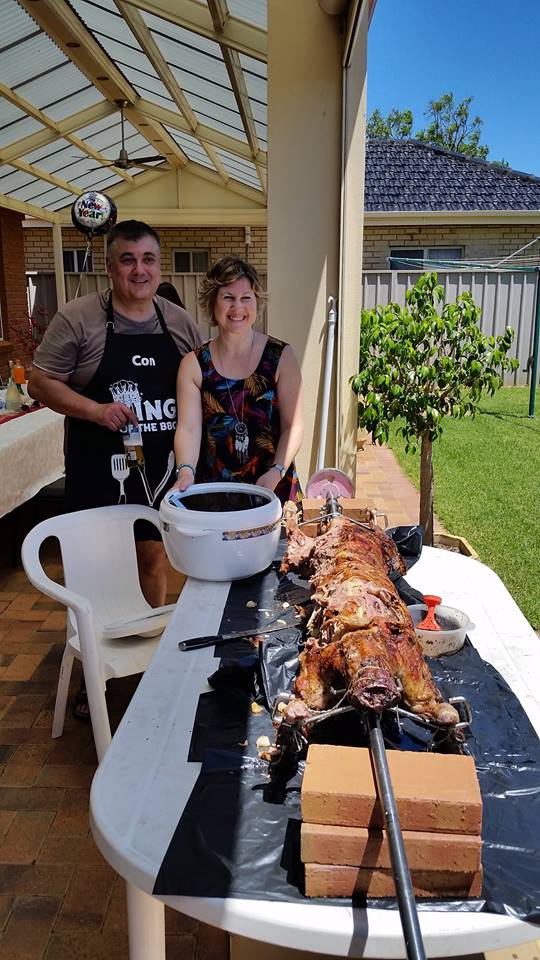
(Ayios Vasilios - St Basil's Day)
(Saint Basil the Great - Archbishop of Caesaria)
In Greece, New Year’s Day is celebrated with the Festival of Saint Basil (Ayios Vasilios), Archbishop of Caesaria, one of the great theologians of the early Christian church.
Children will go from house to house singing the traditional “Kalanda” accompanied by small metal triangles and a little drum and are usually rewarded with sweets or coins in appreciation.
On New Year’s Day, church services are held in the morning and after, every Greek family will celebrate at home with a feast and then, cut the Vasilopita (named to honor Saint Basil) in which the lucky coin was embedded during baking.
The cake is cut by the head of the family in the presence of all family members.
One slice of of the cake is always cut for Jesus Christ, one for Saint Basil and the next for the house.
Then, a slice is cut for the head of the house, the spouse, the children in order of age and, for any other absent family members.
Tradition says that the person who finds the coin in his or her slice will have luck for that year.
If the coin is found in the piece for Jesus Christ or Saint Basil, it goes to the Church.
Passion of Jesus Christ
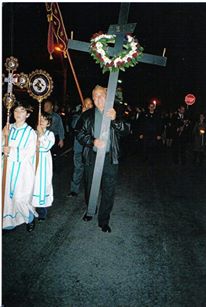
The Greek Orthodox Food Calendar considers Easter the Feast of Feasts in Greece.
The Cross of Christ is the best known religious symbol of Christianity.
It represents the Crucifixion of Jesus and His Resurrection to everlasting life and glory.
The Cross of Christ also reminds Christian's of God's act of love and atonement in Christ's Sacrifice at Golgotha - "the Lamb of God who takes away the sins of the world".
Greeks will travel from all over the world to once again reunite in their home town or villages in Greece, to celebrate with family and old friends their unforgettable and moving Easter traditions.
Thousands of Greeks from around the world will also flock to the Holy Land of Israel in a pilgrimage of fulfillment and to retrace the steps of Jesus Christ.

Greek Orthodox Easter (Pascha)
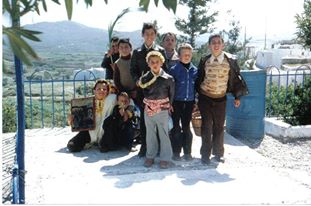
TThe Greek Orthodox Food Calendar emphasizes the symbolic importance of food during the Greek Orthodox Easter (Pascha) season which starts with Great Lent (Megali Sarakosti).
Clean Monday marks the beginning of the great forty day fast to cleanse the body and soul so that Holy Communion (the bread and wine of the Last Supper which became the Body and Blood of Jesus Christ) can be taken at church during Holy Week.
Those who have difficulty fasting for the entire forty days will fast during the first week of Lent and again during the last week of Holy Week.
It means abstaining from food that contains blood such as meat, fish and poultry as well as products that come from animals with blood such as dairy products (milk, cheese, butter, eggs etc).
Foods eaten during this time are the seasonal vegetarian and those that meet Lenten requirements.
On Holy Tuesday, housewives make the traditional Easter biscuits (Koulourakia) while on Holy Thursday after the morning church service they will bake their twisted, Easter sweet bread loaves topped with a red egg (tsoureki) and dye their hard - boiled eggs red to symbolize the Blood of Jesus.
The koulourakia, tsoureki and red eggs are used to celebrate the end of Lent and are also traditionally given as presents on Easter Sunday.
The red eggs also add to the happy festive atmosphere on Easter Sunday as people rap their eggs against their friends eggs and the person with the last un-cracked egg is considered to have luck throughout the remaining year.
Palm Sunday
Palm Sunday is celebrated on the Sunday before Easter because Jesus made His triumphal entry into Jerusalem on a humble donkey on that day and, the people
greeted Him as the King of Israel with palm branches.
On Palm Sunday, people go to church where they are given a Cross made from palm fronds which they put on their icon stands at home.
Fish and seafood are the traditional dishes served by Greek housewives on this day.
On Holy Saturday evening, the Greek Orthodox faithful go to their church for the Liturgy of the Resurrection (Anastasi) which reaches its climax at midnight and the sombre mood of Good Friday representing the Crucifixion is shattered when the priest announces that Christ has Risen.
At that moment, the Easter Candle (representing Christ as the Light of the world) is lit and the Eternal Flame is then passed from person to person to light their own candles until the whole church is illuminated by the light of everyone’s candles and the night air is filled with the singing of the beautiful Byzantine hymn, Christos Anesti.
As the bells of every church joyfully toll the Resurrection of our dear Lord, Jesus Christ holding their lighted candles (the Holy Light) make their way home or to the homes of friends or relatives for the midnight Easter festivities breaking their forty day fast.
The Greek Orthodox Food Calendar has traditional Easter food eaten on this night, straight after the Anastasi (Resurrection) church service.
There is mageritza (dill soup made from lamb or goat tripe and lemon juice), tsoureki sweet bread loaves, koulourakia (Easter biscuits) and the hard-boiled red eggs with its traditional challenge to crack each other’s eggs that is enjoyed by young and old.
Festive Easter Table
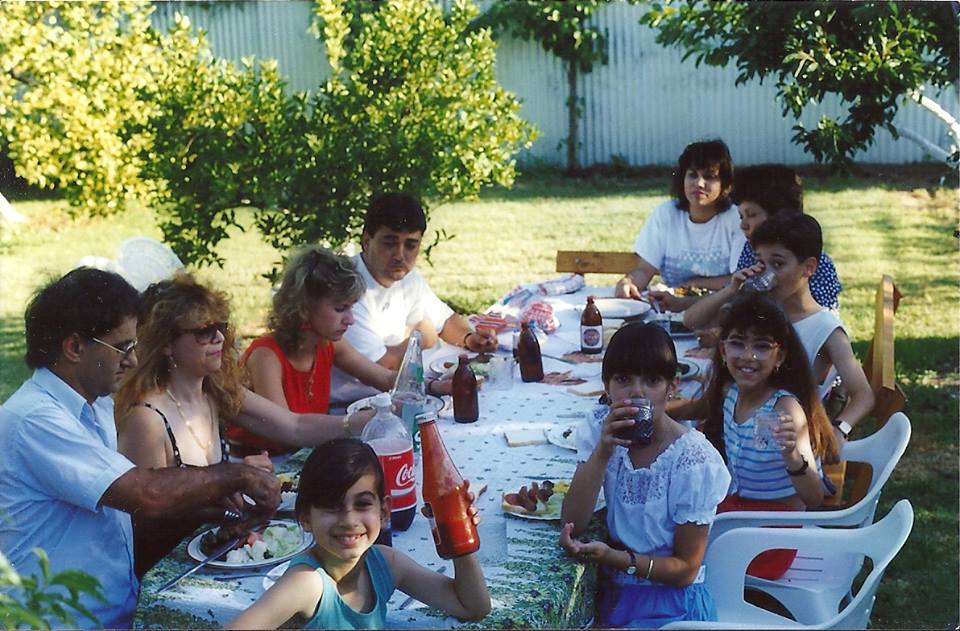
Every Greek Orthodox family will get together to celebrate in true Greek style their rich Easter customs on Easter Sunday (Holy Pascha) around the Festive Easter Table.
The traditional red eggs are piled in baskets and ready to be cracked with family and friends, the mouth-watering tsoureki sweet bread loaves and, of course, the delicious koulourakia (Easter biscuits) are placed on the Festive Table and, will also be given as Easter gifts by the Orthodox faithful.
The main attraction of the day on the Greek Orthodox Food Calendar is the whole spiced lamb, goat or pork (representing the Lamb of God) on a spit slowly roasting over a charcoal fire from the early hours of the morning.
Mouthwatering accompaniments may include bowls filled with a variety of salads, seafood platters, vegetable and rice dishes as well as fruit baskets and delicious Easter cakes, sweets, biscuits and breads.
And, of course soft drinks as well as the traditional Greek wines and spirits like Retsina and Ouzo are plentiful on this special day of our dear Lord, Jesus Christ’s Resurrection to everlasting life and glory.
Christmas
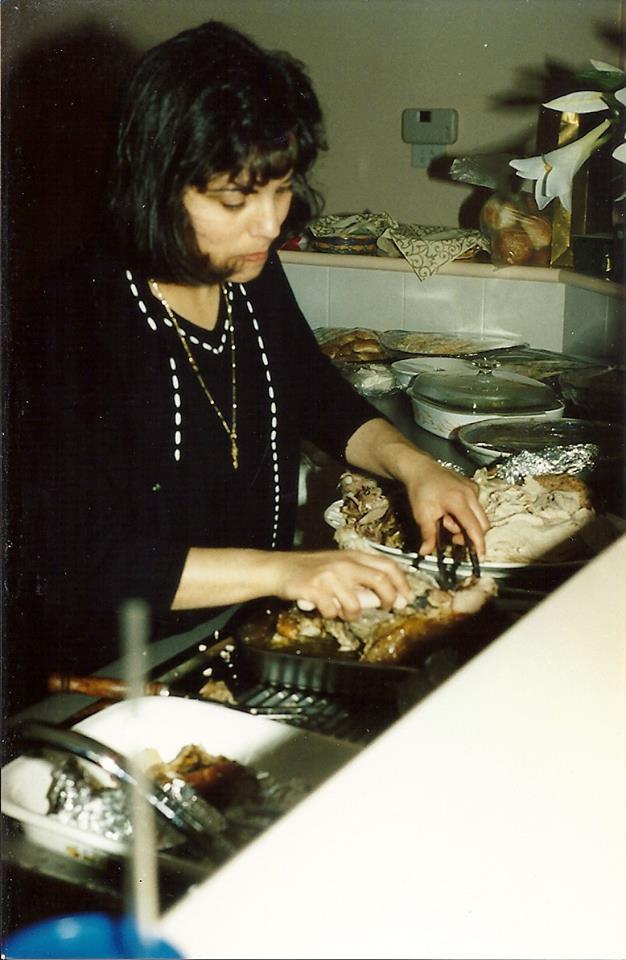
Christmas, with its wonderful traditions of gift giving and receiving and the heartwarming family gatherings, is the loveliest festival of the year and an important festival on the Greek Orthodox Food Calendar
The festive Greek Orthodox Christmas includes the spiritual sense of the real Christmas Story with and the Birth of Jesus born that night in a humble stable in Bethlehem and surrounded by farm animals,
Father Christmas (Santa Claus) is commonly identified with Saint Nicholas, the Christian bishop from Myra, Asia Minor (modern-day Turkey) in the 4th century AD who had a reputation as a secret bringer of gifts.
The Christmas season in Greece is special with many beautiful customs and other Saints Day celebrations that lead up to Christmas Day.
November 15 marks the forty day Nativity Fast to prepare the people for Communion at church and the celebration of the Birth of Jesus on Christmas Day.
November 30, the Feast of Saint Andrew’s is celebrated with traditional deep-fried loukoumathes and December 6th is the Feast of Saint Nicholas.
As Christmas Day approaches, the aroma of melomacarona, kourabiethes, koulourakia and sweet loaves of “christopsomo” (Christ bread) fill Greek kitchens worldwide.
December 25, Christmas Day on the Greek Orthodox Food Calendar, is the beginning of the twelve days of Christmas which lasts through to January 6th, the Feast of Epiphany.
Christmas Day is marked by church services followed by the traditional family feast which is looked forward to after forty days of fasting,
Lamb, pork or goat meat are roasted in ovens and open-spits and served with a variety of mouth-watering accompaniments.
Greek Orthodox Food Calendar
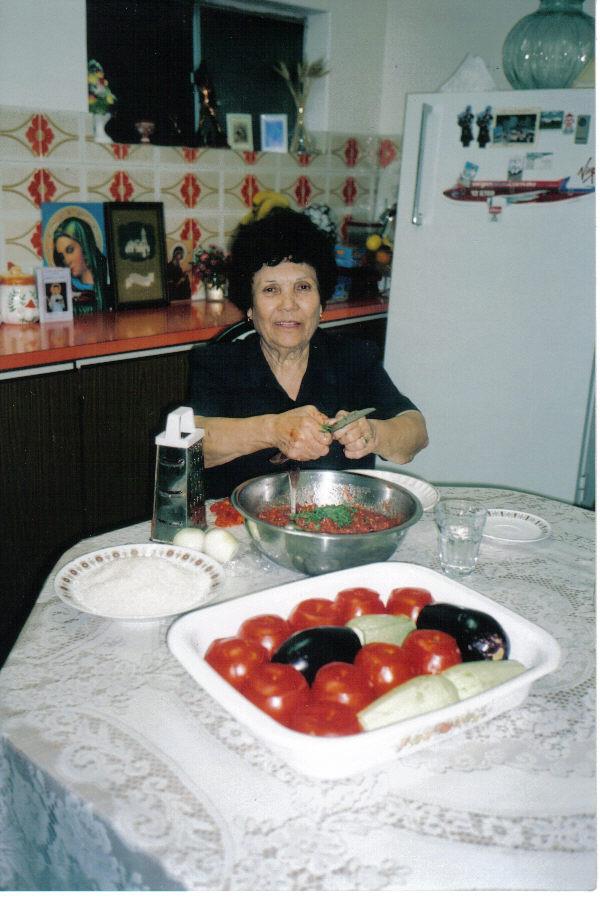
For the Greek people, the seasons and religious festivals of the Greek Orthodox Food Calendar have become a way of life.
There is something beautiful about Easter in Greece with its centuries old traditional ceremonies.
With devoutness, the Christian faithful embrace their traditional Greek Orthodox heritage and follow the Greek Orthodox Food Calendar.
And, during Holy Week will accompany our dear Lord, Jesus Christ and to retrace His Footsteps along the road of His Passion and Crucifixion in a spirit of sincere reverence and faith, carrying the Cross of Christ.
Ezine Articles Author Link
Click on the Link Below

Newsletter Opt-in-Form
The Keen Traveler
Recent Articles
-
The Power Within
Jan 07, 26 05:19 AM
The power within empowers you to shape your own life and goals that are aligned with your true self. -
When all we Have is God
Dec 20, 25 04:21 AM
When all we have is God in times of loss hardship or loneliness God's Presence offers refuge, strength and a purpose for the future. -
Beauty of Christmas
Dec 11, 25 04:22 AM
The beauty of Christmas is the celebration of the real Christmas Story with the Birth of Jesus Christ, the Son of God, Who came to bring love, hope, and salvation to the world.


